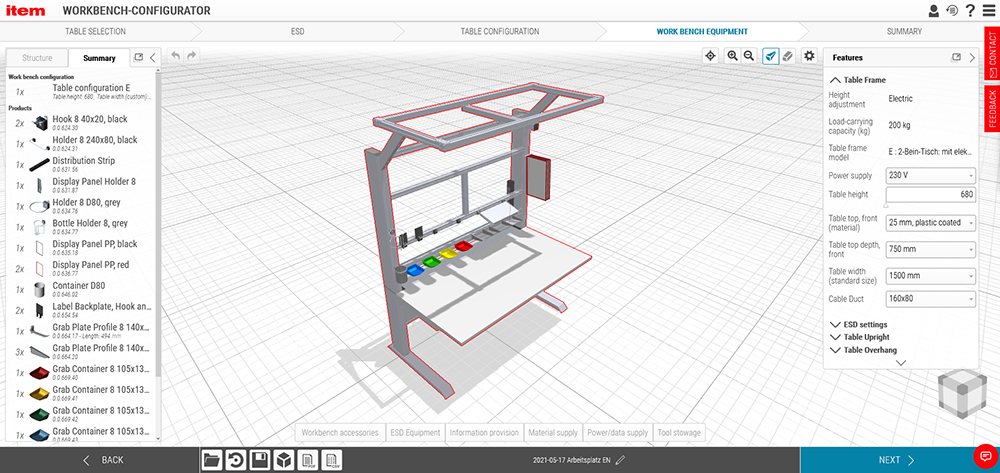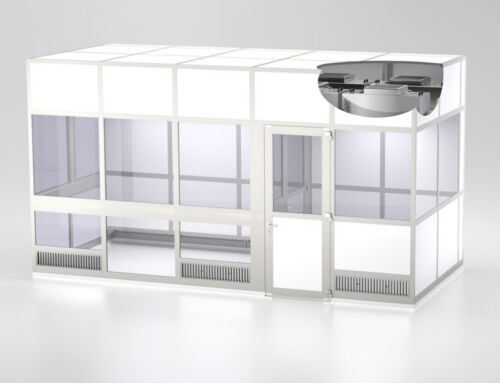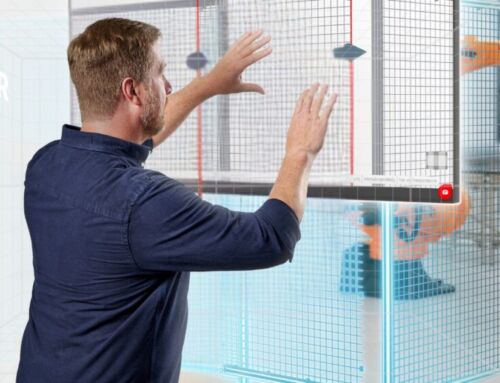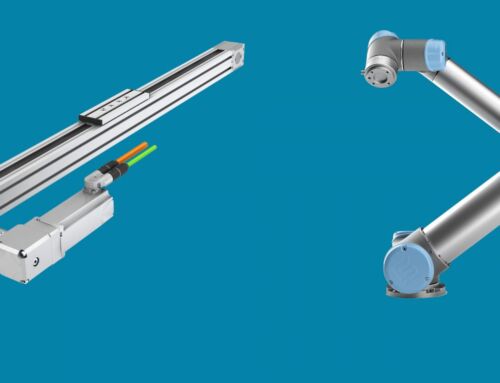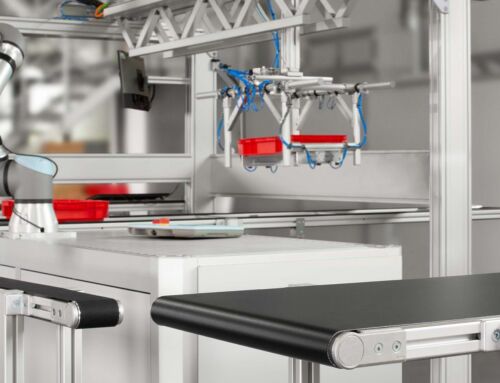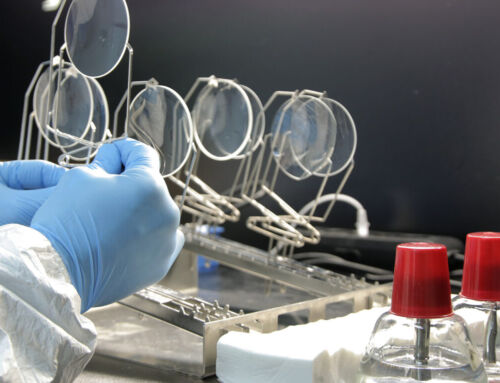The sheer scale of the COVID-19 pandemic has led to numerous innovative developments in industry to provide efficient solutions to meet the multitude of new challenges.
We have already reported on two automation projects that item has played a part in – the manufacture of face masks and a workstation for analyzing coronavirus tests. This is also the backdrop against which the world’s first automated coronavirus testing station should be seen. It was developed by Munich-based Franka Emika GmbH, one of the technological leaders in the field of intelligent robotic assistants. The company was founded in 2016 by brothers Simon and Sami Haddadin. In 2019, Sami Haddadin was the recipient of the renowned Leibniz Prize, and now holds the Chair of Robotics and Systems Intelligence at the Technical University of Munich. The President of Germany, Frank-Walter Steinmeier, awarded both brothers the Deutscher Zukunftspreis (the Federal President’s Award for Innovation and Technology) in 2017 in recognition of their technical and entrepreneurial innovation in the fields of collaborative robotics and Artificial Intelligence. At the heart of the test station is the “SR-NOCS” (“Swab Robot for Naso- and Oropharyngeal COVID-19 Screening”) swab robot. It autonomously takes nose and throat swabs for analysis or for rapid tests. Not only does this reduce the risk of infection considerably, its precision and ability to operate continuously also take a great deal of strain off medical personnel. Line X from the item MB Building Kit System, which is perfect for hygiene-sensitive applications, is used for the frame of the robotic coronavirus testing station.
Conducting Coronavirus Tests Even More Safely With Unique Robotic Technology
Although conventional coronavirus tests are subject to high standards of hygiene, the direct human contact that they involve mean it is impossible to completely eliminate the risk of infection. This is not the case when the specially developed, robotic automated testing system is used. By its very nature, it cannot catch the virus and pass it on. The SR-NOCS is in a completely sealed enclosure with two panes of plexiglass separating it from the patient. The front pane has an inlet port that is changed after every test and through which the robot pushes and thus secures a plastic attachment. On the other side of the enclosure is a human member of staff, who provides the swab for the test, which the SR-NOCS then pushes through the plastic attachment. The patient initiates the nasal and throat swab using a foot pedal, and can also break the process off or repeat it at any time. To ensure the throat swab collects sufficient material for the test, it has to reach deeply into the throat. At the same time, this must be done gently for the patient. The uniqueness of each individual human’s throat posed a major challenge in this regard. “In addition to normal variations, there are also deformations, different depths, and some people have birth defects such as cleft lips,” explains Simon Haddadin.
Robotic Support to Boost Efficiency in Coronavirus Testing
This problem was solved by a vital innovation in Franka Emika’s dexterous robots – a sense of touch that is not only astonishingly similar to that of a human, but actually superior. This is made possible primarily thanks to a type of artificial brain with a memory. As a result, signals can be interpreted and activities learned. The collaborative robot is therefore able to operate extremely delicately. After conducting the coronavirus test, the robot replaces the attachment and dips the fingers of its gripping arm into an ultrasonic bath for disinfection. This contactless form of coronavirus testing, where the robot acts as an intermediary between the patient and the staff member, all but eliminates the risk of infection. At the same time, the standardized procedure ensures consistent quality without any potential deviations in the test. Even once the coronavirus pandemic has passed, the testing station can still be used to test for other infectious diseases such as influenza or streptococcus.
A clinical study in cooperation with the Technical University of Munich and the Klinikum Rechts der Isar confirmed the effectiveness of the coronavirus testing robot. The quality of the swabs obtained was equal to those conducted by humans. The testing robot was also well received by the patients tested. Since one member of staff can monitor several SR-NOCS coronavirus testing stations simultaneously, test capacity can be scaled up quickly. The intuitive operation and efficiency gains make things much easier for medical personnel. The automated testing station can be set up anywhere in less than three hours, and is, theoretically, capable of conducting COVID-19 tests without interruption. The swab robot has now been granted approval under the Act on Medical Devices (Class I). Ultimately, developing the SR-NOCS has also laid the groundwork for another, even bigger project. ProteCT focuses on robot-aided telediagnostics that will also be useful after the current pandemic. The aim is to enable medical staff to examine potentially infectious patients from a safe distance without compromising on any aspect of a conventional examination.
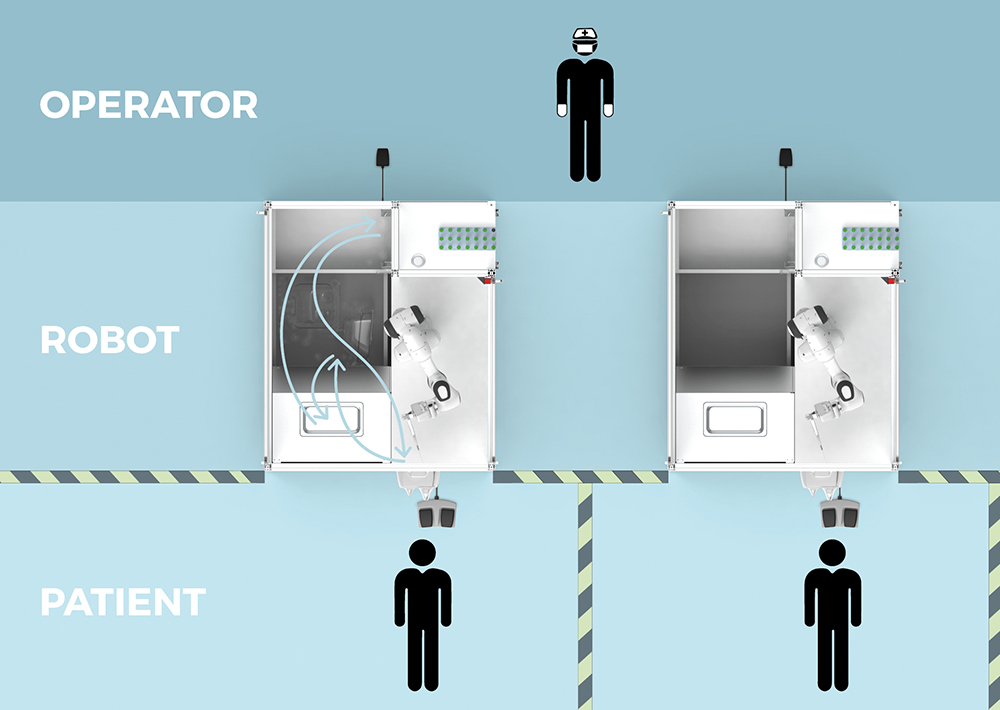
Even safer and more reliable PCR tests – the swab robot is pointing the way to the future of medical technology
Profile technology from item – perfectly suited for robotics projects
The founders of Franka Emika previously worked at the German Aerospace Center (DLR). While there, they had good experiences with item profile technology. item products – namely Line X – were also used for the frame structure of the coronavirus testing station. “I took care to make things as flush as possible so that disinfection processes work better. Profile X is used in the station because of its smaller outer radius,” says Benjamin Loinger, Industrial Designer at Franka Emika. Profiles XMS, which are based on Line X, have been optimized for building machine cabins. The integrated cable conduits make it possible to route cables individually or in large bundles. The adjustable Cover Profiles seal these cable conduits shut and can be combined with operating elements. XMS profiles keep dust out and soiling generated by working processes in. Generally, Loinger tends to use item components as load-bearing or connecting elements. He doesn’t favor any single line, but uses what is best for a particular project. “I mostly work with articles from the MB Building Kit System myself, and I also like trying out new products.”
The profile technology also offers Loinger the greatest possible flexibility. This is a real advantage, especially for research projects, as the specific hardware and the positions of screw fixings only become clear as the project progresses. In addition, he also appreciates that item profiles with closed grooves can be combined seamlessly with other elements such as sheet material and wood, creating a particularly high-quality look. His colleague, solution engineer Martin Kulzer, primarily uses the aluminum profiles for tables for robots, test stands and demonstrators. He also benefits in many ways from using them. “Of course, modular design is the big draw of item, but so are reusability and stability. Being able to fasten and move parts easily is a real advantage, particularly on demonstrators and test stands.”
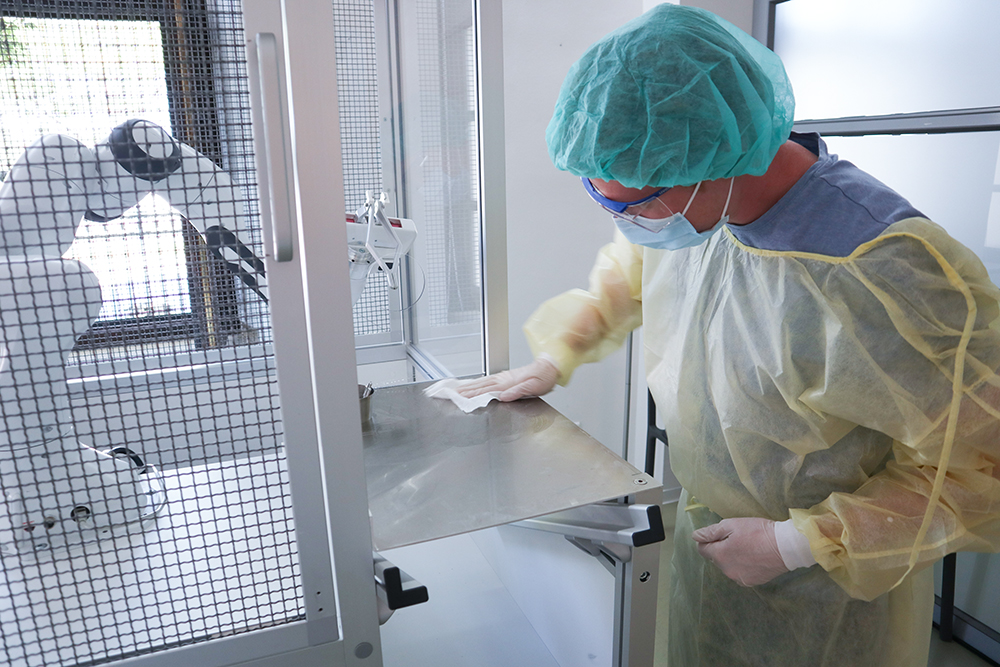
Profiles X (left, and in the background) are particularly easy to clean thanks to their small outer radii.
Are you interested in digitalization and what the future holds for mechanical engineering? Then we have something that’s right up your street! Simply subscribe to the item blog by completing the box at the top right.

